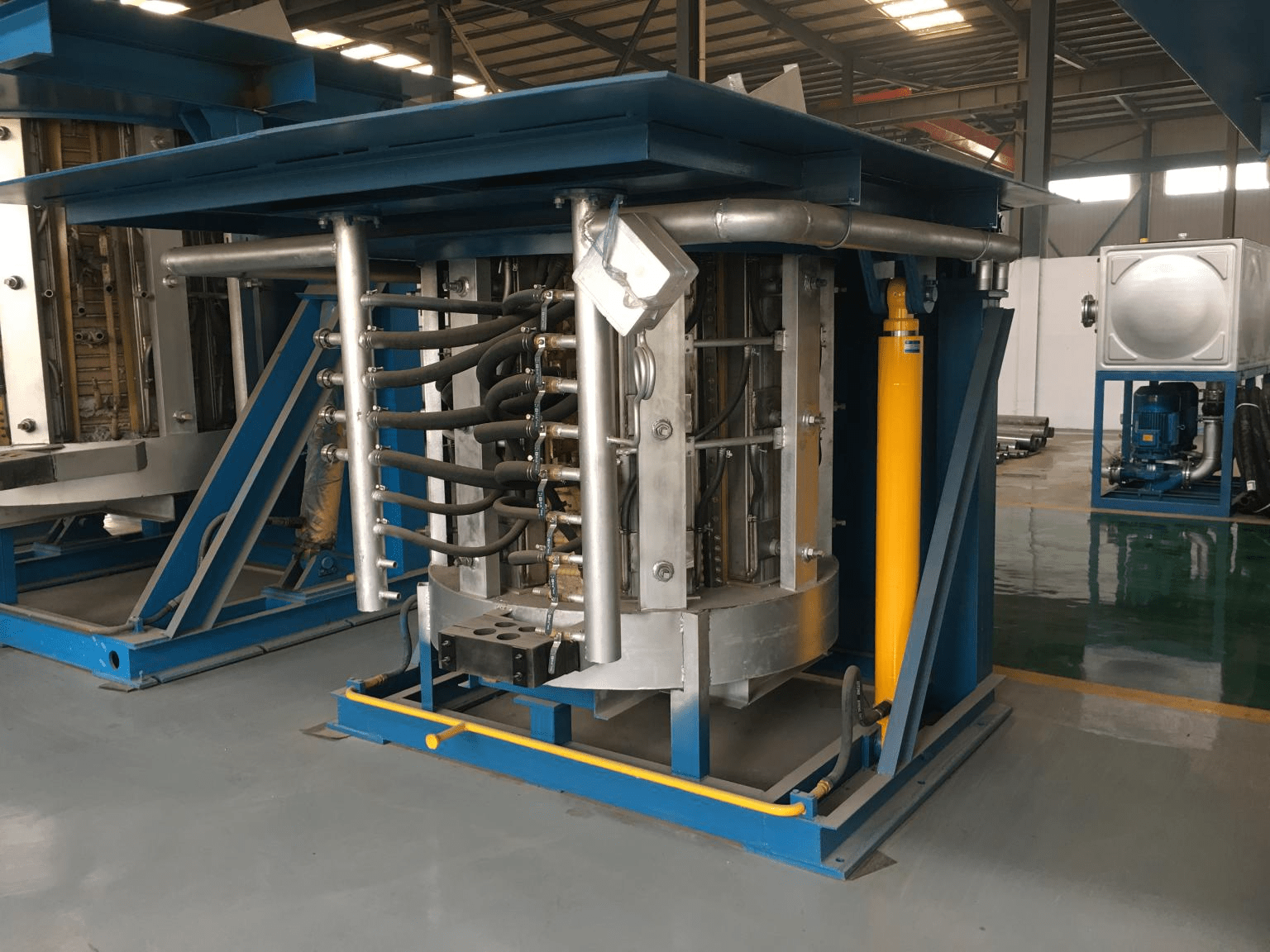Hani Metallurgy is a professional electric induction furnace manufacturer. The company specializes in producing many high-efficiency induction furnaces, such as intermediate frequency coreless induction furnaces, core copper melting furnaces, induction diathermy furnaces, power frequency core insulation (iron) furnaces, etc.
Hani Metallurgy is a scientific and technological innovation enterprise integrating the design, production, sales, and maintenance of medium-frequency induction melting furnaces. Products are used in metal casting and steelmaking industries.
Hani Metallurgy’s new series intermediate frequency furnace consumes about 470 degrees of electricity per ton of molten steel.
High efficiency and energy saving, in line with environmental protection requirements.
Hani Metallurgy electric induction furnace manufacturer R & D manufactures industrial induction furnaces, including medium frequency coreless induction furnaces, core copper melting furnaces, induction diathermy furnaces, power frequency core insulation (iron) furnaces, etc.
Induction furnace steelmaking is the use of induction electrothermal effect to complete the metal smelting process in the induction furnace.
The power supply is generally divided into three types: high frequency (above 10 kHz), intermediate frequency (50 Hz ~ 10 kHz), and power frequency (50 or 60 Hz). According to the size and capacity of the furnace material and the frequency of the power supply, induction furnaces are divided into two categories: cored (mainly closed tank type) and coreless (crucible type).
The circuit of an induction furnace is very similar to a transformer. The primary coil is an induction coil. There is an iron core in the coil of a cored induction furnace to reduce magnetic flux leakage and improve the power factor. The AC magnetic field generated by the coil induces an electromotive force in the charge, generating Joule heat.
Hani Metallurgy electric induction furnace manufacturer cored electric induction furnace is characterized by high electric heating efficiency and high power factor, but when starting to work, there must be a melt in the furnace, and its melting temperature is also low. It is suitable for single varieties such as non-ferrous metals and cast iron. continuous melting and heat preservation.
Hani Metallurgy electric induction furnace manufacturer’s coreless induction furnace is characterized by high melting temperature and easy-to-change varieties. The disadvantage is that the electric heating efficiency is low. It is mainly used for smelting and heat preservation of special steel, nickel-based alloys, cast iron, and non-ferrous metals (see electric furnace).
Hani Metallurgy electric induction furnace manufacturer has two types of furnace linings: acidic refractories and basic refractories.
The acid furnace lining is made of quartz sand containing more than 98% of silicon dioxide. Because of its low melting point and poor stability, it is mainly used for smelting and heat preservation of non-ferrous metals and cast iron.
The basic furnace lining is made of magnesia containing more than 85% magnesium oxide, which is used for smelting special steel and nickel-based alloys. Furnace lining is compacted layer by layer of refractory materials with appropriate particle size ratio by dry method or wet method, and it needs to be dense without delamination. When smelting for the first time, heat slowly to avoid cracks.
During smelting, the metal is heated by induction and then conducted to the slag, so the temperature of the slag is low, and the furnace structure determines that the steel-slag interface is small, which is not conducive to the physical and chemical reactions between the molten pool and the slag. Therefore, smelting special steel or For nickel-based alloys, better raw materials should be used as much as possible, and ingredients should be prepared according to the burning loss of each element to heat and melt quickly.
When a large amount of charge has been melted, slag should be added to reduce oxidation. The slag should be compatible with the furnace lining. After full melting, according to the composition of the finished product, add deoxidizers (ferrosilicon powder, silicon calcium powder, aluminum powder, etc.) in batches, and take samples for analysis and adjust the composition if necessary.
When the composition is qualified and the deoxidation is good, the steel can be tapped. Cast iron is not seriously oxidized during melting and heat preservation, and the metallurgical quality requirements are also relatively low, which can give full play to the advantages of the convenient operation of induction heating.

